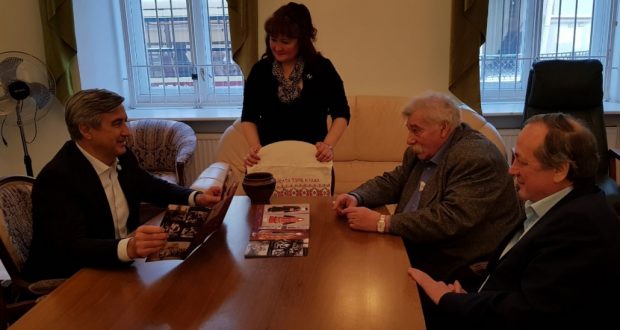Today, as part of a working visit to St. Petersburg, Deputy Prime Minister of the Republic of Tatarstan, Chairman of the National Council of the World Tatar Congress Vasil Shaikhraziev visited the Russian Ethnographic Museum and the Museum-Estate of G.R. Derzhavin.
During the conversation with Director of the Ethnographic Museum Vladimir Gruzman, issues were raised about the cooperation of the museums of Tatarstan and St. Petersburg, and about future plans. Also, it should be noted that negotiations are currently underway to allocate a separate room for the permanent exposition of the history of the Tatar people. As Vladimir Gruzman assured with the support of the Government of Tatarstan this issue will be resolved in the near future in a positive way. We remind that in the museum’s treasures exhibits of the Tatar heritage from the time of Peter I are stored.
Later Vasil Shaykhraziev visited the museum-estate of G.R. Derzhavin. Here chairman of the National Council was given a tour of the estate, and he laid flowers to the monument of the poet.
For reference:
The Russian Ethnographic Museum is one of the largest ethnographic museums in Europe. In its storehouses cultural monuments of 157 peoples of Eurasia (the territory of the former Russian Empire) are kept. The museum’s collection allows the complex representation of the culture and way of life of the both big nations and minor ones, whose number does not exceed one hundred or two hundred people.
The Museum-Estate of G.R. Derzhavin is a complex of buildings, including a greenhouse, a garden and a front yard. In the Central building of the manor in 2003, to the 300th anniversary of St. Petersburg, the Museum of G.R. Derzhavin and Russian literature of his time was opened. For a quarter of a century, from 1791 to 1816, the poet’s mansion was one of the main centers of the cultural life of St. Petersburg.

